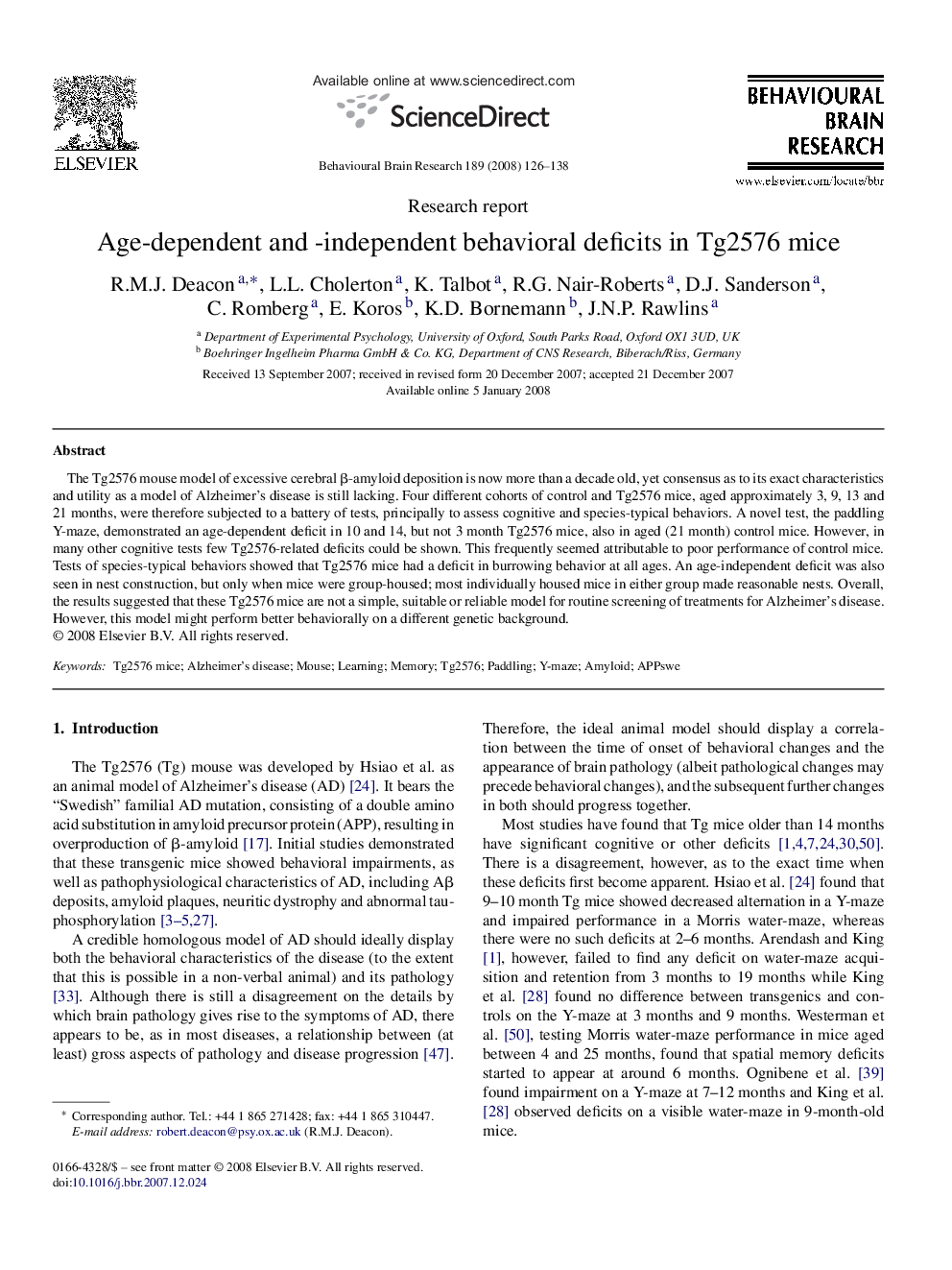| Article ID | Journal | Published Year | Pages | File Type |
|---|---|---|---|---|
| 4315285 | Behavioural Brain Research | 2008 | 13 Pages |
The Tg2576 mouse model of excessive cerebral β-amyloid deposition is now more than a decade old, yet consensus as to its exact characteristics and utility as a model of Alzheimer's disease is still lacking. Four different cohorts of control and Tg2576 mice, aged approximately 3, 9, 13 and 21 months, were therefore subjected to a battery of tests, principally to assess cognitive and species-typical behaviors. A novel test, the paddling Y-maze, demonstrated an age-dependent deficit in 10 and 14, but not 3 month Tg2576 mice, also in aged (21 month) control mice. However, in many other cognitive tests few Tg2576-related deficits could be shown. This frequently seemed attributable to poor performance of control mice. Tests of species-typical behaviors showed that Tg2576 mice had a deficit in burrowing behavior at all ages. An age-independent deficit was also seen in nest construction, but only when mice were group-housed; most individually housed mice in either group made reasonable nests. Overall, the results suggested that these Tg2576 mice are not a simple, suitable or reliable model for routine screening of treatments for Alzheimer's disease. However, this model might perform better behaviorally on a different genetic background.
